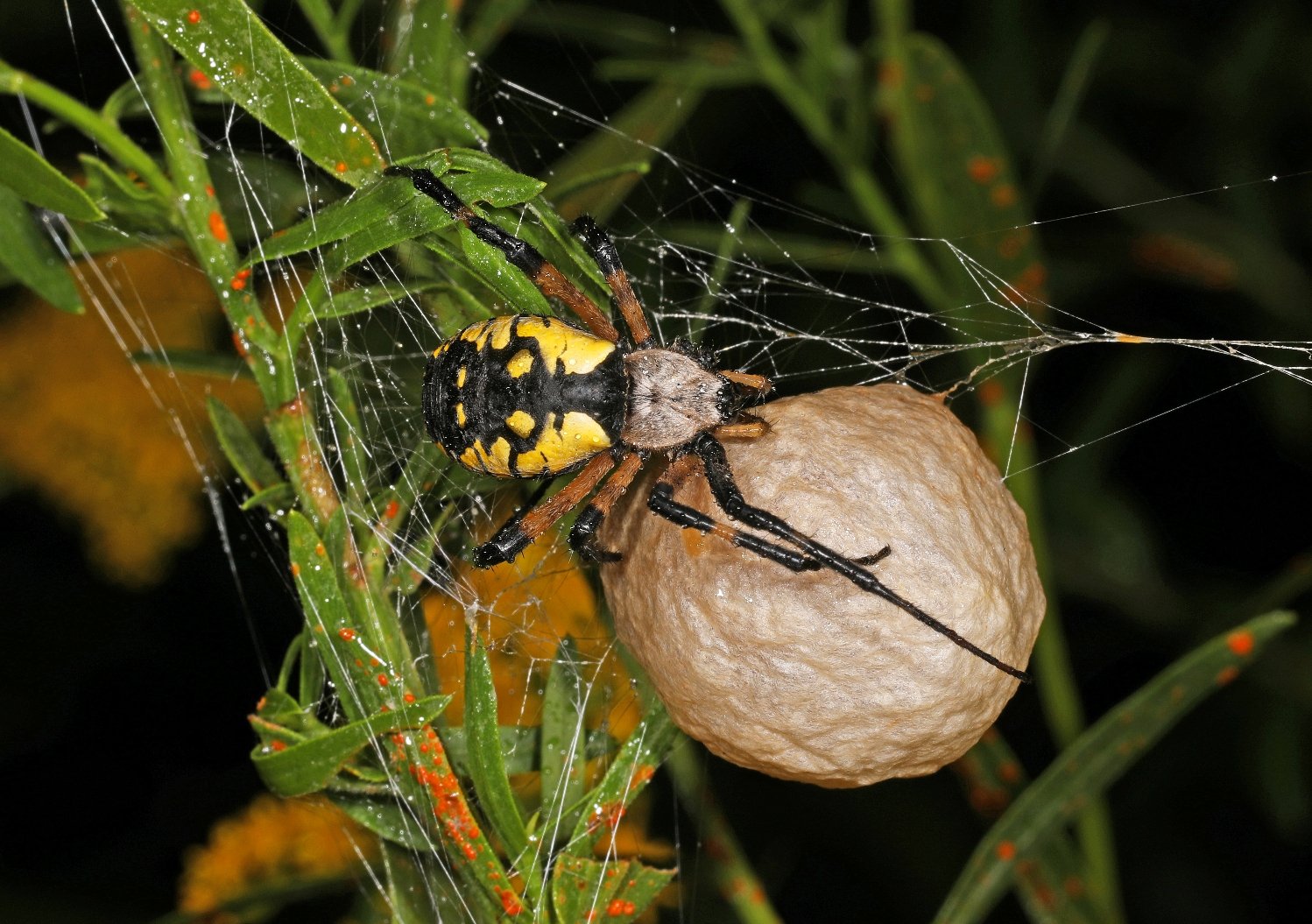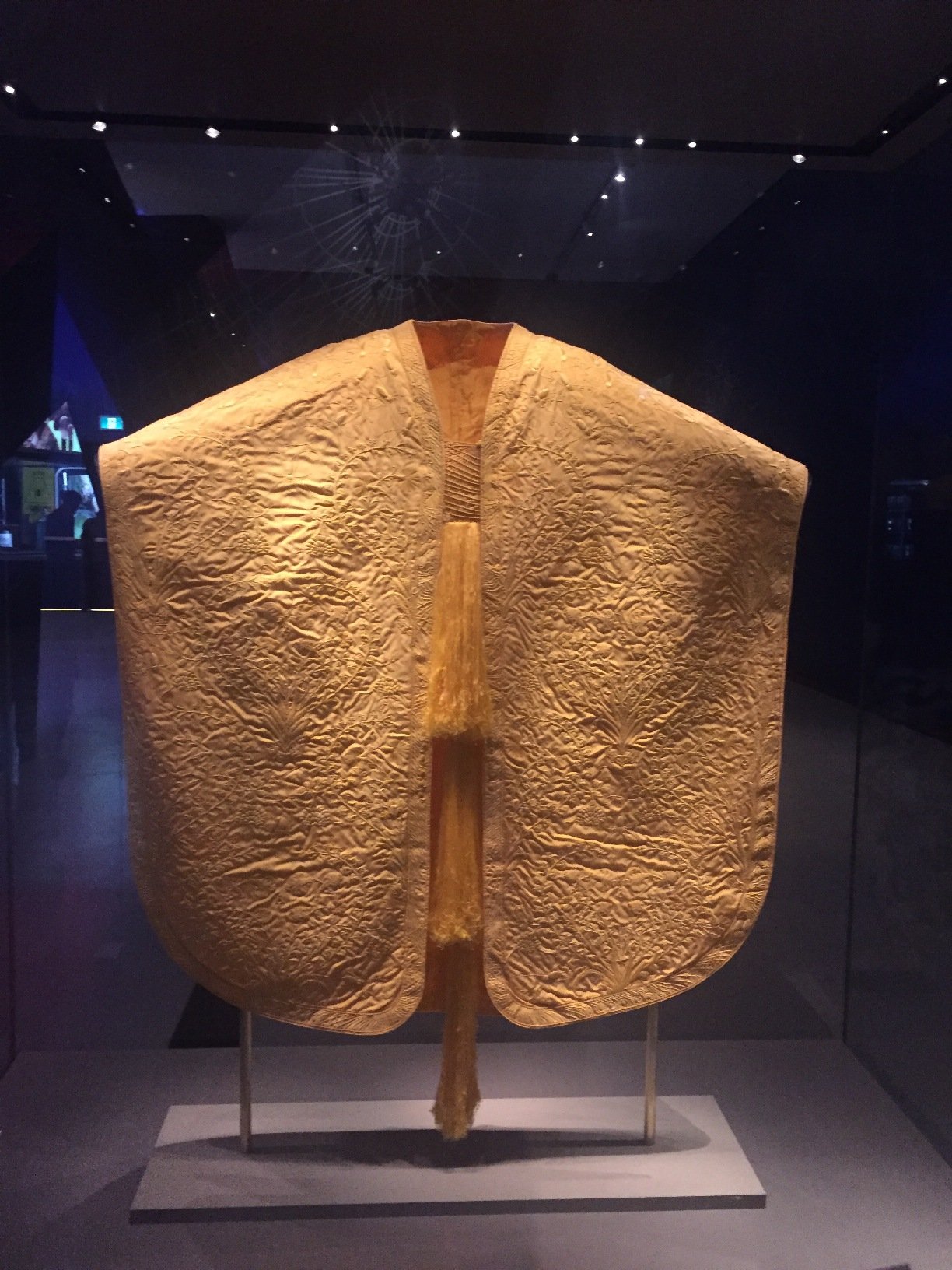Photo: Marbled Orbweaver, Judy Gallagher
Judy Gallagher is an ASNV board member and a regular surveyor of local wildlife who also captures photos of what she sees, in particular the less common species.
Many of you have owned a silk garment and have marveled at the softness and strength of it. And you've all heard about how silk comes from silkworms, domesticated moth caterpillars. But spiders also produce silk, and it has been used for a number of different purposes including as crosshairs for optical instruments and for suspending fusion targets during laser ignition.
All spiders produce silk. An individual spider can produce up to 7 different types of silk and each type of silk is produced by a different gland. Wikipedia lists the following uses of spider silk: prey capture, prey immobilization, reproduction, dispersal, source of food, nest lining and nest construction, guidelines, drop lines and anchor lines, alarm lines and pheromonal trails.
Marbled Orbweaver, Araneus marmoreus, Judy Gallagher
Here's a Marbled Orbweaver (above), and this is a fairly typical prey capture web for the Orbweaver (Araneidae) family.
Yellow Garden Spider, Argiope aurantia, Judy Gallagher
In this picture, a Yellow Garden Spider is using aciniform silk to wrap up its prey. It took less than 30 seconds for the prey to be completely enveloped. The web that you see here is a different type of silk, possibly ampullate silk or flagelliform silk.
Yellow Garden Spider, Argiope aurantia, Judy Gallagher
When the Yellow Garden Spider female creates her egg sac (above), she will use tubuliform silk for the tough outer coating.
Toad-like Bolas Spider, Mastophora phrynosoma, Judy Gallagher
But even Orbweaver family members don't all use webs for catching things. The Bolas Spider (above) secretes a silk line with a sticky blob of silk on the end (bolas). The spider then creates a scent that mimics a moth pheromone, attracting male moths. When the moth approaches, the Bolas Spider swings its sticky bolas at the prey. I am fascinated by Bolas Spiders, and am honored to have several of my pictures in the Wikipedia entry for Bolas Spiders.
White-jawed Jumping Spider, Hentzia mitrata, Judy Gallagher
When we think about spider webs, we typically think of those used for prey capture, the ones that I sometimes fail to see on nature walks until I am festooned in sticky spider silk, but there are spiders other than Bolas Spiders that don't use webs to catch their food. Jumping Spiders leap on their prey. But they use ampullate silk as a drag line to find their way back to where they came from, as seen in the rainbow colored strand behind this Jumping Spider (above).
Bold Jumper, Phidippus audax, Judy Gallagher
Jumping Spiders also use silk to make nests.
Spider silk is strong, tough and stretchy, and scientists are studying spider silk for possible commercial uses.
Spider Silk Shawl, Judy Gallagher
You may be wondering if garments can be made with spider silk. The answer is yes. I saw this incredible cape at an exhibit at the Royal Ontario Museum. It's made from the silk of more than 1,000,000 Madagascaran Golden Orb-weaver spiders, and it took 82 people more than 4 years to extract the silk from the spiders. And spiders are cannibals, so it would be more challenging to raise spiders than silkworms. So it is unlikely that we will see commercially available spider silk clothing any time soon.
View more of Judy’s Observations from Meadowood articles here.








